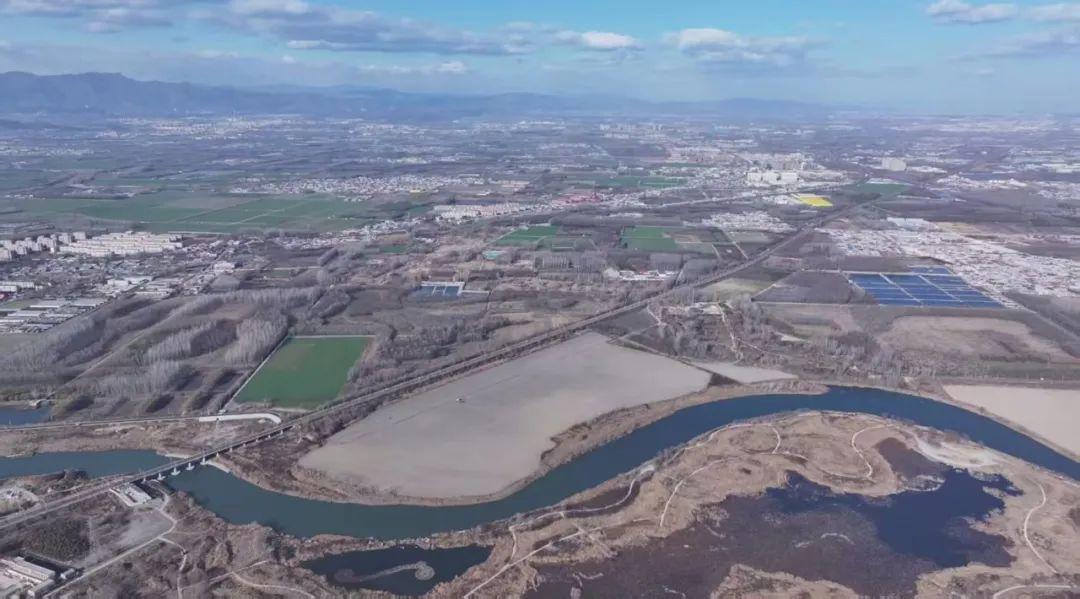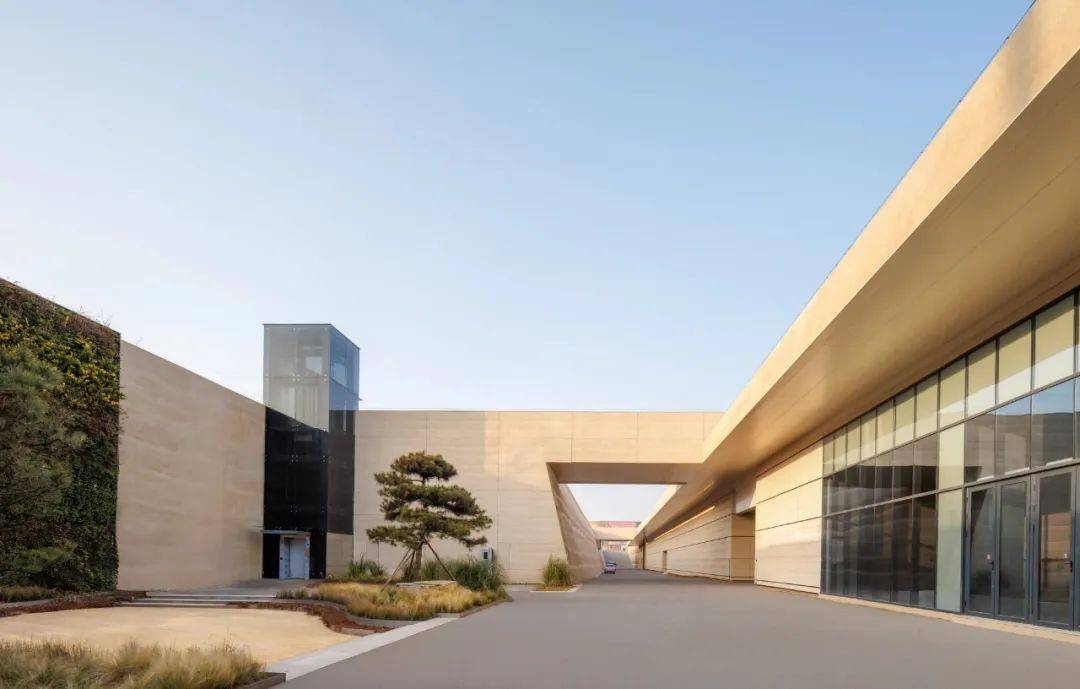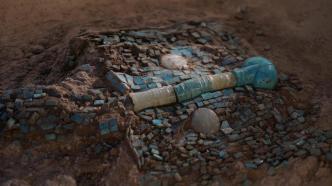
On September 15, the China Archaeological Museum, located at the northern end of Beijing’s central axis, officially opened to the public. The Paper learned at the scene that the Chinese Archaeological Museum has the theme of "Historical China, Tripod Forges Civilization". It has a permanent exhibition hall of more than 7,000 square meters and more than 6,000 exhibits. The basic displays include "The Origin of Civilization", "Zhaizi China", "Unification of Great Powers" and " Five special topics: "Harmony of all directions" and "National Awakening".
The biggest highlight of the exhibition is the important cultural relics from the Neolithic Age and the Xia, Shang and Zhou dynasties, all of which were discovered through field archaeology. For example, the pottery flat pot with Zhu calligraphy and the painted dragon pattern pottery plate from the Taosi site; the turquoise dragon, bronze medallion, and bronze knight unearthed from the Erlitou site; the ivory cup and Simu Xin tripod unearthed from the Yin Ruins; and the bronze sacrifice statue unearthed from Shaanxi. etc., are all high-level cultural relics that are well-known at home and abroad but are rare to see. In particular, cultural relics such as the turquoise dragon were unveiled to the public for the first time.
The Paper reporter learned that among the five topics, "Origins of Civilization" covers the Paleolithic Age to the Neolithic Age, including cultural relics from Xinglongwa, Miaodigou, Taosi and other sites; "Zhaizi China" tells the story of Xia Dynasty with cultural relics The history of the Shang and Zhou dynasties includes Erlitou, Yin Ruins and other cultural relics; "Unification of the Great Powers" tells the historical period after the Qin Dynasty; "Harmony of All Directions" focuses on the Silk Road and the Maritime Silk Road; "National Awakening" shows The Chinese people’s attempt to save themselves from the nation after the Opium War remains in history.

The Yin Ruins chariot and horse pit and cultural relics wall in the entrance hall of the China Archaeological Museum

Yinxu Fuhao Tomb Exhibition Area
The Chinese Archaeological Museum is my country's first national-level professional museum named after archaeology, established by the Chinese Academy of History. According to reports, all the fine cultural relics unearthed on display at the China Archaeological Museum come from the front lines of archaeological field excavations, and all the precious ancient books on display are collected by the Chinese Academy of History. The "Historical China, Forged Civilization" exhibition uses the cultural relics discovered by field archaeology as clues to succinctly and comprehensively tell the story of China from the Paleolithic Age to the present. A large number of cultural relics show the most advanced material civilization of each era.
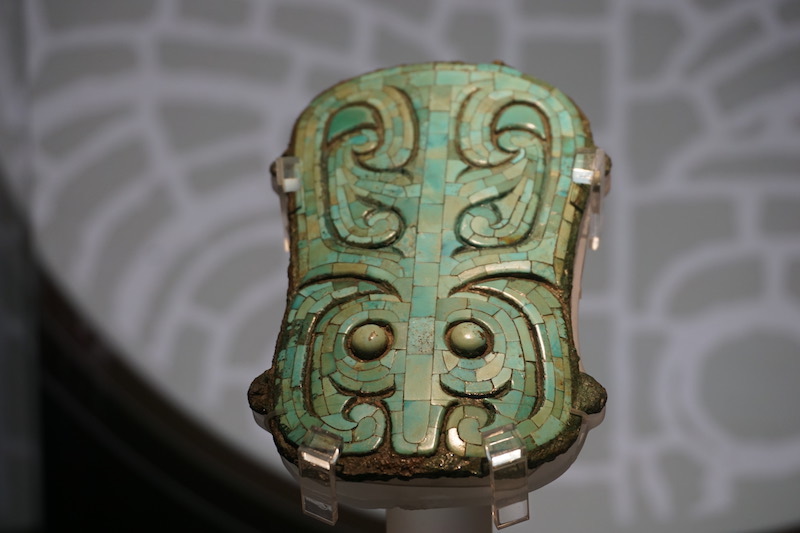
Turquoise bronze medallion unearthed from the Erlitou site
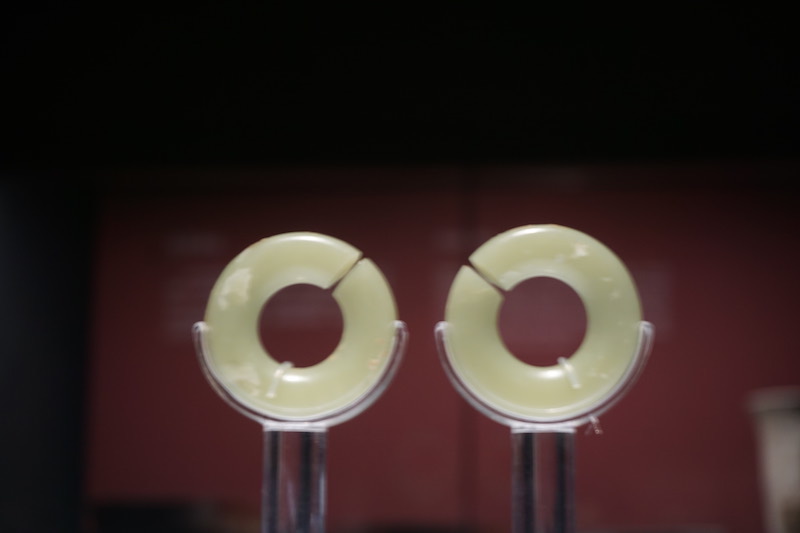
Jade jue unearthed from Xinglongwa site
One of the "treasures of the museum" that the on-site commentator focused on was the turquoise dragon-shaped vessel unearthed from the Erlitou site in Yanshi, Henan. The Erlitou ruins are generally considered to be the capital of the late Xia Dynasty. This turquoise dragon is one of the most important, exquisite and unique cultural relics of Xia culture, and is known as a "super national treasure". According to public information, this turquoise dragon has never been exhibited publicly, and this is the first time it is available to the public.

Turquoise dragon head

Turquoise dragon's head (detail)
This turquoise dragon is composed of more than 2,000 turquoise pieces of various shapes. Each turquoise piece is only 0.2 to 0.9 cm in size and only about 0.1 cm in thickness. There is also a copper bell on the dragon's waist, which may correspond to the record in the "Book of Songs" that "the dragon flag is yangyang, and the bell is yangyang". Its huge workmanship, exquisite production, and large size are very rare among early dragon-image cultural relics in China. Some scholars believe that the unearthed turquoise dragon has found the most direct and orthodox origin of the Chinese nation's dragon totem. This green dragon unearthed from "the earliest China" and "the first royal capital of China" is the real Chinese dragon.
At present, there is no conclusion on the function of this turquoise dragon. There are various theories such as dragon tablet, dragon staff, dragon flag, etc. However, scholars generally believe that this artifact is exclusive to high-level nobles and is related to sacrifice.
This turquoise dragon was unearthed by Xu Hong, a researcher at the Institute of Archeology of the Academy of Social Sciences, when he was the leader of the archaeological team at the Erlitou site. Xu Hong once recalled the excavation of the turquoise dragon. The cultural relic was unearthed in Tomb No. 3 of the Erlitou site. The turquoise pieces were intermittently distributed from the shoulders of the tomb owner to the crotch area, with a total length of more than 70 centimeters. The turquoise pieces are extremely small and difficult to clean. If you are not careful, the turquoise pieces may be displaced, making it impossible to restore the original device. The archaeologists realized that they could not complete the cleanup at the archaeological site. In the end, they removed the turquoise dragon as a whole, hollowed out the lower part and surroundings of the artifact, stuffed it with wooden boards, put a wooden frame on it, and then filled the space between the wooden frame and the soil with gypsum. pulp, covered with film, tied up in wooden boxes with steel wires, and transported to Beijing with soil and cultural relics for careful cleaning.

Copper bell in the middle of turquoise dragon
To this day, the turquoise dragon displayed in the museum has not been completely extracted from the soil. The lower part is still buried in the soil, partially maintaining its preservation state for more than three thousand years. This is due to its unique structure and preservation conditions, but inadvertently, it also allows this national treasure to maintain a strong archaeological flavor and present a style different from any other national treasure.
Another "treasure of the museum" described by the commentator is the bronze sacrifice statue unearthed in 1984 from the Western Zhou Cemetery in Zhangjiapo, Chang'an, Shaanxi Province. Xi Zun is a kind of wine vessel that appeared in the Shang Dynasty and was used in the Zhou Dynasty. It has a unique shape and is rare in quantity. The body of this bronze sacrifice vessel is a standing monster with a head looking forward, a raised nose, erect ears, and a bird-shaped vertical flap on each side of its abdomen. The body of the vessel is decorated with Kui patterns, Taotie patterns, tiger patterns, etc., which reflects the superb level of bronze casting in the Western Zhou Dynasty.
The uniqueness of this sacrifice lies in the four animals attached to the body. There is a phoenix bird standing on the cover button on its back. A curly-tailed tiger is attached to the neck, making a walking appearance. There is a looking back Dronosaurus on the chest and buttocks. There are two lines of six-character inscriptions on the bottom of the cover and the belly of the body: "Deng Zhong made Baozun Yi". Therefore, this sacrificial statue is also called the Deng Zhong sacrificial statue.
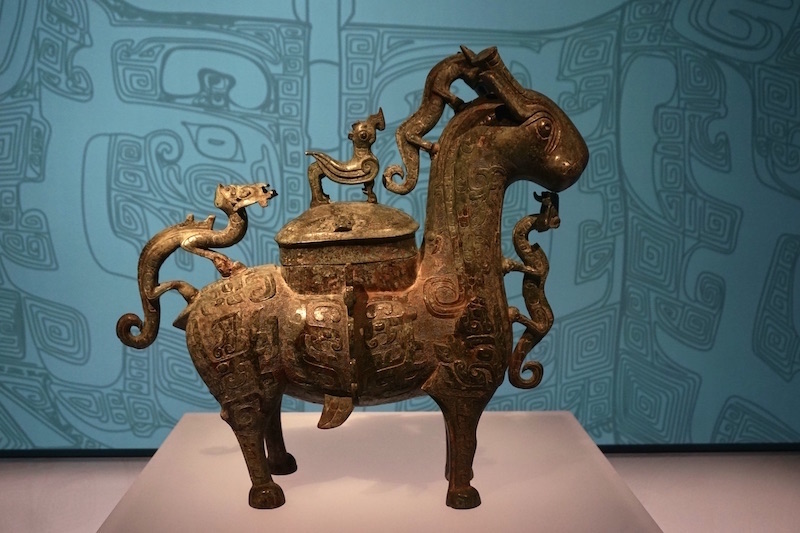
Bronze Sacrifice Zun

Bronze sacrifice statue (part)
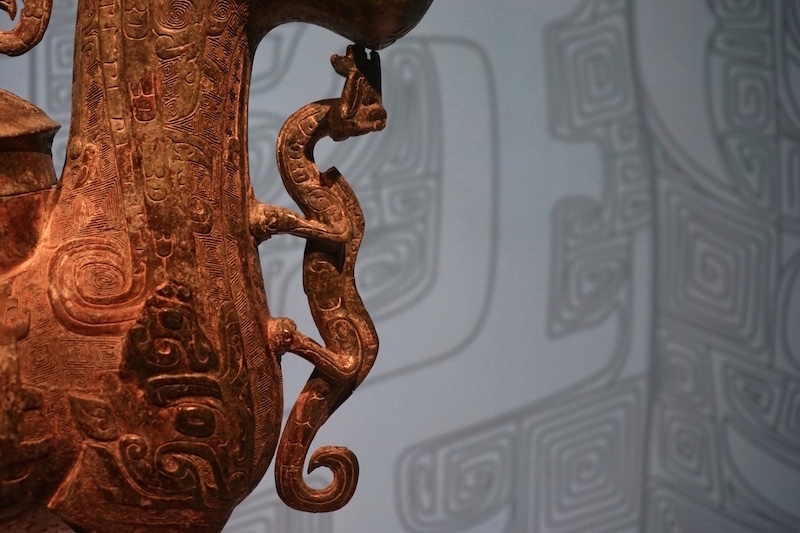
Bronze sacrifice statue (part)
A special area has been opened in the exhibition hall of the China Archaeological Museum. All the objects on display come from the Fuhao Tomb in the Yin Ruins, making it the most complete series of unearthed objects for the entire audience. Among them, the Simu Xin bronze square tripod is displayed in the center, which highlights the weight of this heavy weapon.
A pair of Simu Xin copper square tripods were buried with Fuhao's tomb, and the other is collected in the Yinxu Museum in Anyang. The inscription "Simu Xin" is cast on the inner wall under the mouth, which means that Fuhao's children cast this tripod to worship their deceased mother "Xin". "Xin" is the temple name enshrined in the ancestral temple after Fu Hao's death. This tripod weighs 117.5 kilograms and is one of the few large and heavy vessels from the Shang Dynasty.

Simu Xin bronze square tripod

Animal-shaped jade ornaments unearthed from Fuhao's tomb in Yinxu
The ivory cup from Fuhao's tomb is also a world-famous artifact. There are more than a thousand funerary objects unearthed from Fuhao's tomb, among which three ivory cups are particularly eye-catching, and only one is an ivory cup inlaid with turquoise. The ivory cup on display at the China Archaeological Museum is engraved with intricate patterns, including animal face patterns, Kui patterns, etc. The finishing touch is the turquoise inlaid in the ivory.
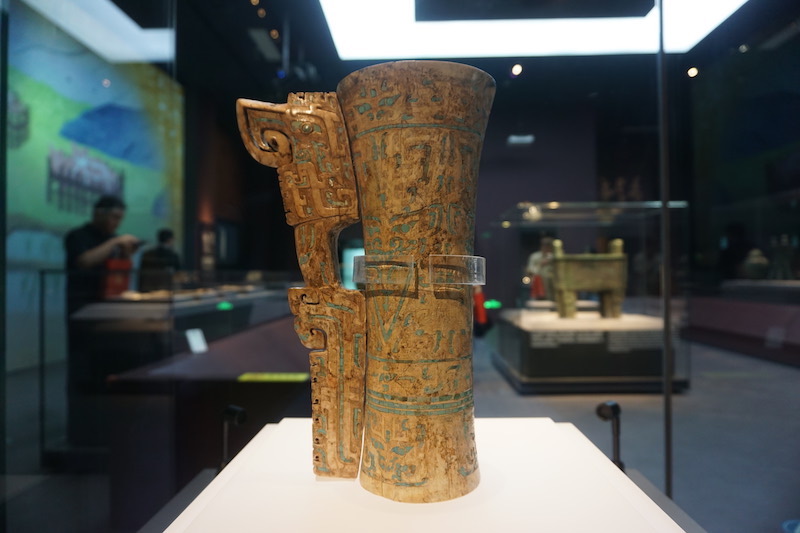
ivory cup

Ivory cup (detail)
The body of the cup is inlaid with a turquoise ring, which divides the entire cup body into four sections, of which the second section has the most abundant patterns. The facial structure of the Taotie pattern is clear. There is a large triangular pattern under the animal's mouth. There are symmetrical Kui patterns on both sides of the triangular pattern, with the head facing down and the tail pointing upward. Taotie's mouth, eyes, nose and triangular patterns are all inlaid with turquoise. The handle of the ivory cup is equally complex, with a sacred bird carved on the Kui shape and inlaid with a large number of turquoise.
This ivory cup uses extremely complex craftsmanship, including relief, line carving, inlay and other techniques, showing that the Shang Dynasty people had richer craftsmanship in addition to copper casting and jade making. In 2002, this turquoise-embedded ivory cup from the Shang Dynasty was listed among the first batch of cultural relics banned from overseas exhibition.

Painted dragon pattern pottery plate from Taosi ruins

Miaodigou colored pottery
In the "Origins of Civilization" unit, the Taosi ruins occupy an important space. The exhibition hall displays a series of important late Neolithic cultural relics unearthed from the Taosi site, such as the painted dragon-patterned pottery plates unearthed from large tombs, which were the earliest dragon-shaped patterns to appear in the Central Plains. The series of Taosi painted pottery on display are also very rare. Compared with the well-known painted pottery of the Majiayao Culture in Gansu and the painted pottery of the Miaodigou Culture in Henan, they have unique characteristics in patterns and colors.
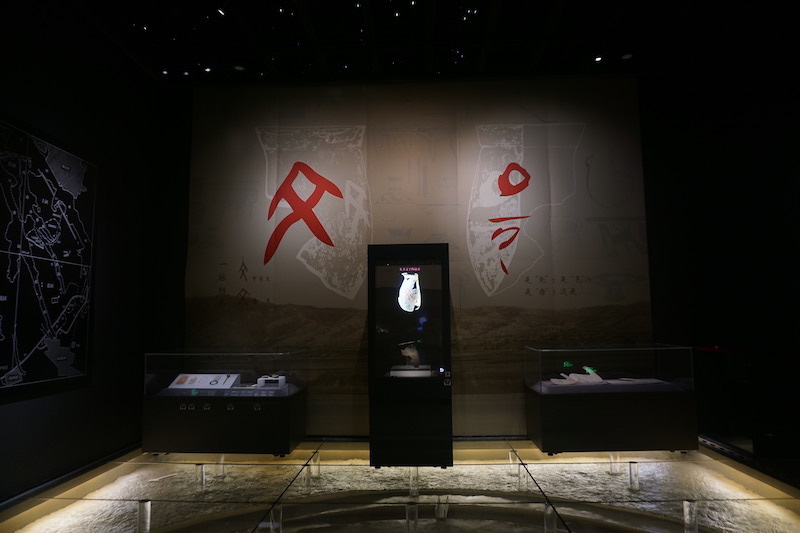
Exhibition site, pottery flat pot with Zhu calligraphy
This pottery flat pot with Zhu calligraphy unearthed from the Taosi site has triggered people's discussion of Chinese writing before oracle bone inscriptions. There is a symbol written in cinnabar on the belly of the flat ampulla. Some people think that it is very similar to the structure of the character "文" in oracle bone inscriptions. There are two characters written in red on one side of the flat belly, which cannot be read yet. A circle of red is painted along the damaged area, indicating that the pot was broken at the time of the writing. The strokes and strokes of the characters are clear, and it is speculated that the writing tool was a brush. Also located in the Central Plains region, the writing before Oracle Bone Inscriptions has not yet been systematically discovered and confirmed. The written symbols on this pottery flat pot have triggered academic discussions.

Exhibition scene, pottery flat pot with Zhu calligraphy (detail)
The Taosi ruins have gradually become more popular among the public in recent years. The site is located in Taosi Village, Xiangfen County, southwestern Shanxi. It is an ancient city site in the Central Plains in the late Neolithic Age that preceded the Xia Dynasty. Looking at the overall process of Chinese civilization, from the multi-center era of civilization with "starry sky" 5,000 years ago to the era of leading culture in the Central Plains, the ancient Taosi country is a more critical node. It was the largest ancient country in the Central Plains at the same time, so it is also considered to be the eve of the formation of the leading position of the Central Plains civilization, or the "original China".
Gong Wen, director of the China Archaeological Museum, previously mentioned that the China Archaeological Museum started the exhibition outline planning in March 2019, started the renovation and renovation of the exhibition hall in July, and completed the construction and exhibition arrangement by December 2019. Since the end of December 2019, internal trial operation and modifications have been started.
She mentioned that archaeologists have the obligation to participate in the construction of scientific literacy among the people, to liberate the relics excavated through scientific field archaeological surveys from warehouses, and to creatively transform unfamiliar archaeological knowledge. Dozens of outstanding young and middle-aged experts and scholars made plans for the exhibition, discussed its positioning, and more than ten people participated in writing. Ten drafts of the outline were carefully studied, and the text was revised repeatedly. Many members of the History Department of the Academy of Social Sciences and older generations of experts and scholars reviewed and made pertinent suggestions. Opinion. The origin of agriculture, the origin of civilization, the Xia, Shang and Zhou dynasty projects, oracle bone inscriptions, ancient Chinese bronzes, ancient Chinese capitals, Chinese history and geography, ancient Chinese governance ideas and systems, etc., are all topics that generations of scholars have been willing to sit on for decades. Accumulation of academic research.
